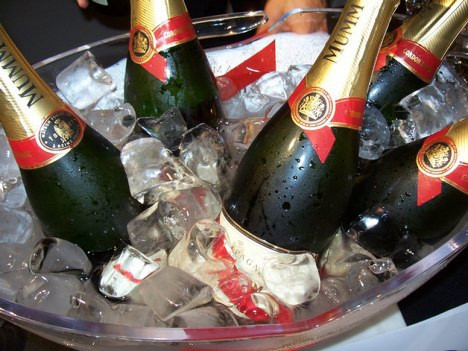Asians Just Really Aren't That In To Champagne. Scotch, On The Other Hand...
Europe's economic woes have hit champagne, but don't look East to solve that problem

Asian consumers have been a veritable life preserver for many luxury brands amid Europe’s profound and enduring economic slump in recent years. Consumers there have helped the likes of high-end France’s luxury goods maker and seller Hermes International SCA (EPA: RMS) ride out the recession.
But while wealthy consumers in China, South Korea and Singapore have embraced Luis Vuitton, Brooks Brothers and other high-end Western brands, one icon of prosperity that they haven’t developed a taste for is champagne. Instead, when wealthy Asians celebrate an anniversary or the closing of a business deal they prefer a tumbler of Scotch to a fluke of the bubbly.
And that’s not good for France’s champagne producers, who have seen sales of their exclusive beverage so closely linked to good times and celebration fall on European woes -- by over 10 percent this year -- as consumers across the region reel back on conspicuous consumption.
"Champagne is a festive drink, and this year, there's not much to celebrate,” Marc Sibard, the owner of Les Caves Augé, one of Paris's oldest wine shops, told the Wall Street Journal.
Of the top 10 export countries for France’s 4,722 champagne wine growers, only four are outside of the European Union, and Japan is the only market in Asia, which as a whole consumes only 5 percent of the more than 141 million bottles shipped out of France every year.
France itself typically consumes 56 percent of the world’s champagne supply, but that demand has been declining, by about 6 percent in the first nine months of the year, according to the country’s champagne trade group CIVC.
Despite the decline in consumption, the price of champagne has increased this year after the industry warned last November that demand increases would result in higher prices. A year later, as demand fell rather than increase, there’s discussion about aggressive price wars and concerns about erosion of prestige.
''We have seen, because of the poor global economy, some 'actors' who are going too far in terms of price, and this is a problem, and it's a point Champagne has to address as an [industry] and that we are very active in,'' Jean-Marc Lacave, president of Veuve Clicquot, the world’s second-largest Champagne producer, told Australia’s Knox Weekly. Australian is the eighth-largest market for the wine, consuming nearly 5 million bottles annually, and the only other Asia-Pacific country on the list of top importers.
But if champagne isn’t getting any support from Asian consumers like other luxury brands, Scottish malt whiskey has seen sales increase 12 percent in the past 12 months. According to the Wall Street Journal, demand for the exclusive high-end spirit has seen double-digit growth across Asia, with South Korea, Singapore and Taiwan in the top 10 consumers.
© Copyright IBTimes 2025. All rights reserved.




















